Campaign Commander - General Van Tien Dung
Having been trained in practice since before the August Revolution in 1945 and the resistance war against French colonialism (1945-1954), during the resistance war against the US to save the country, comrade Van Tien Dung was assigned to directly command many major campaigns. In early 1975, the Chief of the General Staff of the Vietnam People's Army, Van Tien Dung, was assigned by the Politburo and the Central Military Commission to the battlefield to directly command the Central Highlands Campaign, achieving resounding victories, creating a breakthrough opportunity to accelerate the liberation of the South and unification of the country.
In early April 1975, General Van Tien Dung continued to be assigned as Commander of the Ho Chi Minh Campaign . Thoroughly grasping the strategic determination of the Politburo and the Central Military Commission, the Campaign Command determined: This was the final strategic decisive blow, ending the war, achieving a complete and quick victory. Therefore, it was necessary to concentrate forces and technical weapons, promote combined strength, create an overwhelming advantage to quickly destroy and disintegrate the entire enemy army, liberate Saigon, and create conditions for the complete liberation of the South. Before making the decision, General Van Tien Dung struggled to think of a plan to attack Saigon quickly, to win for sure, to collapse the puppet army and government system, but how to attack so that Saigon suffered the least losses was a difficult problem.
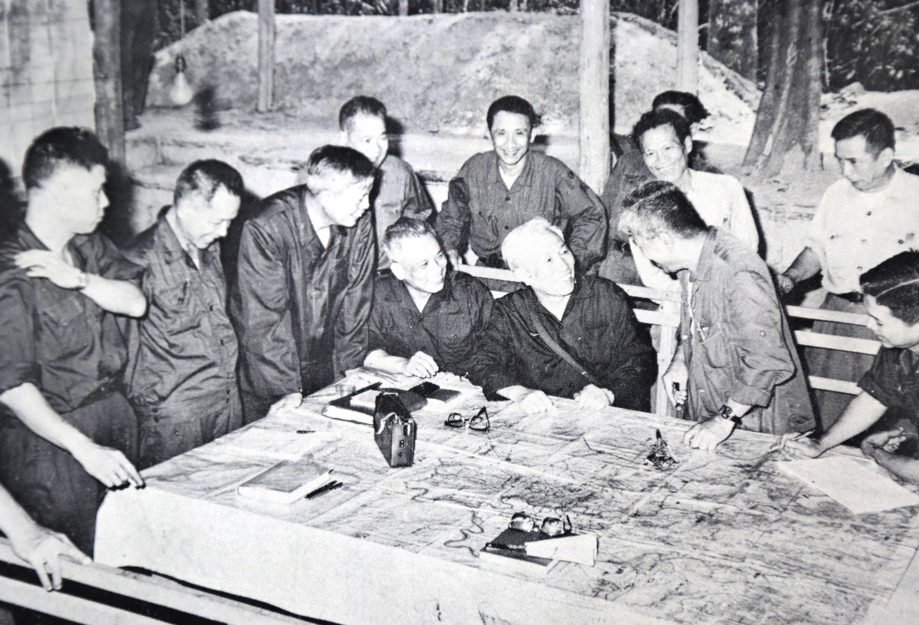 |
Party leaders and comrades in the Ho Chi Minh Campaign Command (April 1975). Photo archive |
After studying, discussing, and exchanging, General Van Tien Dung and the Campaign Command found the optimal solution, choosing the enemy's key targets to quickly capture, and proposed the following way of fighting: Using a suitable part of the force in each direction, strong enough to form a siege, divide, and block the enemy, not allowing them to retreat to Saigon; destroying and disintegrating on the spot the enemy's main infantry divisions defending the outer perimeter; at the same time, using the majority of our forces to quickly penetrate deep to capture key areas in the suburbs, opening the way for the strong, tightly organized mechanized assault divisions to advance quickly along the main roads, attacking directly at the 5 selected targets in the inner city: the puppet General Staff, the Independence Palace, the Capital Military Zone, the General Police Department, and Tan Son Nhat Airport. Special forces, commando teams, armed security forces and city militia, and political forces of the masses in Saigon-Gia Dinh will first capture the bridges across the river, serve as springboards for the main force to advance, guide the units, eliminate traitors, and mobilize the masses to rise up.
Under the direction of Comrade Van Tien Dung, the Campaign Command developed a plan for the uprising of the masses to closely coordinate with the military offensive. The main attacking force formed 5 wings, each wing equivalent to an army corps, commanded by talented generals. In particular, 5 wings from 5 directions simultaneously advanced to surround the enemy's headquarters in Saigon-Gia Dinh; many units had to move quickly from many places, depart at different times, travel on many routes, handle different attack and opening situations... but General Van Tien Dung and his comrades in the Campaign Command calculated and directed unanimity so that all troops could march to Saigon in time and carry out the campaign successfully, liberating the South.
PAINTING
--------------
Political Commissar Pham Hung - the one who keeps the "soul and lifeblood" on the battlefield
On the morning of April 30, 1975, on the radio, puppet President Duong Van Minh proposed that the Liberation Army cease fire to negotiate. Comrade Pham Hung, Political Commissar of the Ho Chi Minh Campaign, immediately sent an urgent telegram to the units on the battlefield: The enemy is wavering and disintegrating. All troops should attack hard, advance quickly and capture the targets according to regulations. Regroup at the Independence Palace. The enemy has nothing left to negotiate and hand over. They must surrender unconditionally. Go forward! Total victory!
The victory of the resistance war against the US to save the country in general, and the 1975 Spring General Offensive and Uprising in particular, had important contributions from comrade Pham Hung. In 1967, Politburo member and Deputy Prime Minister Pham Hung was assigned by the Politburo to be Secretary of the Central Office for Southern Vietnam and Political Commissar of the Southern Liberation Army. Comrade Pham Hung, together with the Central Office, directed the development of revolutionary forces; promoted the three-pronged attack (political, military, and military agitation) throughout the region...
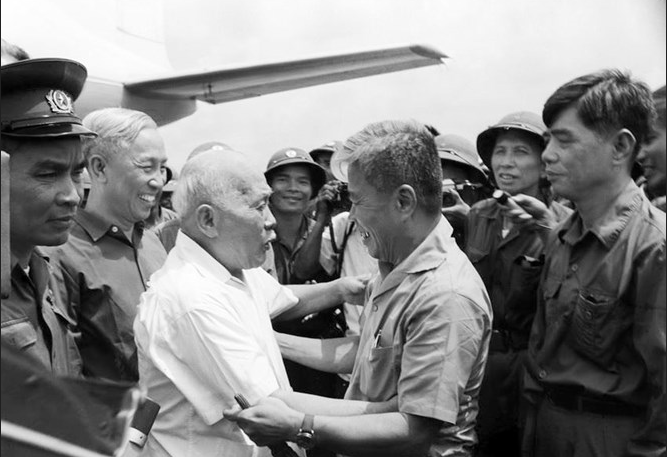 |
| Comrade Pham Hung, Politburo member and Secretary of the Southern Party Committee, welcomed President Ton Duc Thang at Tan Son Nhat Airport on May 13, 1975. Photo: VNA |
After the Paris Agreement was signed (January 1973), without any illusions about the enemy, firmly grasping the ideology of revolutionary violence, the ideology of continuous attack and attack, Secretary Pham Hung directed the forces to strengthen political struggle, military agitation, and military attacks throughout the South, contributing to bringing the Southern revolution into a new phase: the phase of creating position, creating force, and creating opportunities for the general offensive. At the end of August 1974, comrade Pham Hung and the Central Office of the South, the Military Commission of the South sent to Hanoi the operational plan for the 1974-1975 dry season with the determination to gain decisive victory and complete the liberation of the South within two years 1975-1976.
To create momentum and strength, our army decided to launch the Route 14-Phuoc Long Campaign. Secretary Pham Hung and Commander of the Liberation Army of South Vietnam Tran Van Tra reported to First Secretary Le Duan and General, Commander-in-Chief Vo Nguyen Giap to let the 4th Corps use tanks and 130mm artillery to attack Phuoc Long town. On January 6, 1975, Phuoc Long was liberated. The Phuoc Long victory signaled the weakening of the puppet army, and the Politburo determined the strategic plan to liberate the South.
On April 8, 1975, Comrade Pham Hung was assigned by the Politburo to be the Political Commissar of the Saigon-Gia Dinh Liberation Campaign. Following the wishes of the cadres, soldiers and people, Political Commissar Pham Hung and the Campaign Command later proposed to the Politburo to let the Saigon-Gia Dinh Liberation Campaign be named the Ho Chi Minh Campaign.
To complete the mission of liberating the South in April 1975, Political Commissar Pham Hung and the Campaign Command met to discuss the determination and specific combat plan with the motto of combining military attacks with the uprising masses; determining the targets to be attacked, the campaign combat method with the highest requirement of quickly liberating Saigon and keeping the city intact. In his position as Secretary of the Central Office for Southern Vietnam, comrade Pham Hung and the Central Office directed the coordination activities of localities in the entire region. In Saigon-Gia Dinh, comrades Nguyen Van Linh and Vo Van Kiet were assigned to be responsible for leading and directing the preparation and launching of the uprising masses, especially leading and commanding the special forces, commandos, local armed forces, coordinating with mass organizations...; at the same time, directing the activities of the city immediately after Saigon-Gia Dinh was liberated.
During the Ho Chi Minh Campaign, Political Commissar Pham Hung always closely followed the battlefield to direct ideological work, build and promote the spirit of attack, solidarity and coordination; implement the policy of mass mobilization, policy towards prisoners and deserters; prepare personnel and action plans of the Military Management Committee when the city was liberated. From April 26, 1975, he and Commander Van Tien Dung organized and commanded the troops to storm the inner city of Saigon, quickly capturing important targets. The Ho Chi Minh Campaign was completely victorious at noon on April 30, 1975.
Major General, Associate Professor, Dr. VU QUANG DAO (former Director of the Institute of Military History)
------------
Deputy Commander of the Campaign Le Duc Anh
Comrade Le Duc Anh - a staunch communist, a battle-hardened general was always present on fierce battlefields at difficult times with many major battles, contributing to creating turning points in the cause of national liberation. During the Ho Chi Minh Campaign, comrade Le Duc Anh was in the position of Deputy Commander of the Campaign and Commander of the Southwest Wing Corps, one of the five attack directions of the final strategic battle against Saigon. With his courage and experience gained through practical combat, he participated in planning and directly commanded, excellently completing the assigned tasks, contributing with our army and people to liberate the South and unify the country.
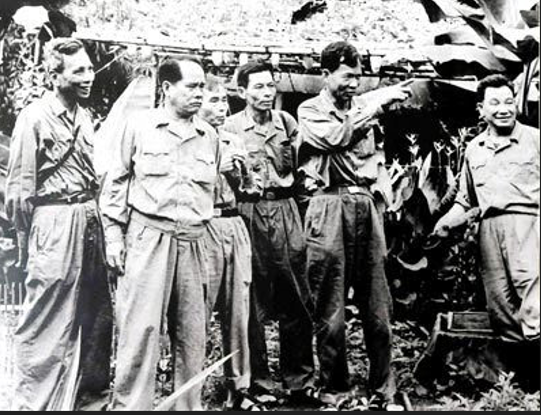 |
Comrade Le Duc Anh (second from right) and members of the Regional Command at Ta Thiet base, Loc Ninh, Song Be. Photo: Archive |
The Southwest Wing Corps was established with Lieutenant General Le Duc Anh (Sau Nam) as Commander, with forces including: Group 232 (Division 5, Division 3, Regiment 16, artillery, tank, signal, and engineering units), supplemented by Division 9, Regiment 271B, 2 main regiments of Military Region 8 (24, 88), 1 tank battalion, 1 130mm artillery battalion, 6 anti-aircraft guns, and a number of other technical units.
With the characteristics of the combat area being mainly rivers, swamps, and crisscrossing rivers and canals, it was difficult to organize mobile operations and was not suitable for fighting using large, concentrated formations; here, the enemy concentrated its forces including 10 infantry divisions, 8 commando regiments, 11 armored regiments, 33 artillery battalions, and 3 air force divisions, commanded by General Nguyen Khoa Nam, Commander of the 4th Corps and the 4th puppet Tactical Zone. Comrade Le Duc Anh advocated organizing an attack formation including heavy units such as tanks and artillery. He directed the artillery units to disassemble the artillery parts and put them on boats and sampans to cross Dong Thap Muoi; and required the tank units to seal the exposed parts on the vehicles so that they could both march on the canal banks and follow the Vam Co River to the assembly point.
On April 26, 1975, the Ho Chi Minh Campaign began. In the southwest direction, Commander Le Duc Anh commanded the Corps and local armed forces to fight and cut off Highway 4, attack Hau Nghia, Duc Hoa sub-region, Duc Hue sub-region, Tan An, Thu Thua sub-region. On April 28, 1975, units of the Southwest Wing Corps attacked the direct defense line of Saigon, captured a number of targets, cut off all waterways and roads, and completely isolated Saigon. On April 30, the Southwest Wing Corps launched a general attack on the inner city. At 11:00 a.m. the same day, units of the Corps raised the liberation flag on the roof of the Capital Special Zone, the General Police Department, the Long An Provincial Governor's Palace, and other bases. Some of the Corps' deep thrusts developed to join other wings at the Independence Palace.
Under the command of Lieutenant General Le Duc Anh, the Southwest Wing Corps successfully completed its mission in the Ho Chi Minh Campaign, not only successfully carrying out the strategic task of separating Saigon from the Southwest region but also carrying out a dangerous attack from behind on the Saigon puppet army's defense system, which was the final knot that defeated the Saigon puppet government's "deadly defense" intention.
NGUYEN NGOC TOAN
--------------
Deputy Commander of the Campaign Le Trong Tan
Comrade Le Trong Tan is considered one of the best generals in Vietnam; he was the first battalion commander at the age of 36, and experienced many campaigns in the resistance war against the French colonialists and the invading American imperialists. In particular, in 1972, as Commander of the Tri Thien Campaign, Comrade Le Trong Tan and the Campaign Command successfully completed the mission, liberating Quang Tri province and some localities in Thua Thien Hue province, creating a new position and strength for the revolution, contributing to forcing the American imperialists to sign the Paris Agreement on ending the war and restoring peace in Vietnam. In the Hue-Da Nang Campaign (March 1975), Commander Le Trong Tan commanded the forces to achieve a resounding victory, smashing the enemy's strategic plan to regroup, creating favorable conditions for our army and people to concentrate their forces to carry out the final strategic attack to liberate the South.
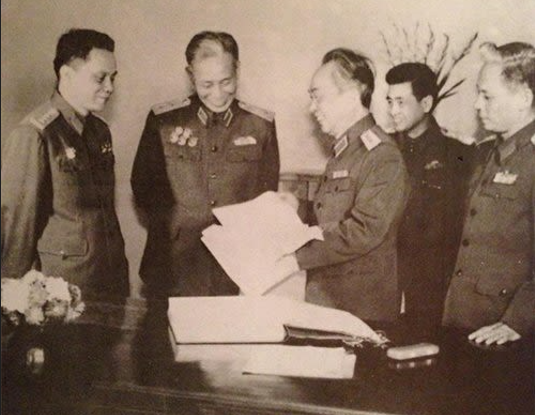 |
| Comrade Le Trong Tan (second from left) and General Vo Nguyen Giap and some officials discuss work. Photo: Archive |
During the Ho Chi Minh Campaign, comrade Le Trong Tan was the Deputy Commander of the campaign, directly commanding the Eastern and Southeastern wings including the 2nd Corps and the 4th Corps... In the Southeastern direction of the campaign, the 2nd Corps was assigned to the 3rd Division (Military Region 5), coordinating with the special forces and the armed forces of Vung Tau town with the mission of destroying enemy troops, capturing Nuoc Trong base, Long Binh sub-region, Long Binh base, Nhon Trach sub-region, Tuy Ha citadel - Cat Lai ferry, capturing Duc Thanh sub-region, Ba Ria town; placing artillery in Nhon Trach to fire at Tan Son Nhat, coordinating with the friendly direction to capture the Independence Palace... From April 9 to 21, 1975, the 4th Corps completed the mission of liberating Xuan Loc, opening wide the eastern door, creating favorable conditions for the 2nd Corps to quickly deploy forces and carry out missions in the Southeast direction.
Implementing the campaign plan, under the command of comrade Le Trong Tan, in the Southeast direction, on the night of April 26, 1975, the artillery of the 2nd Corps poured shells into the selected targets, creating conditions for the infantry and tanks to urgently move to occupy the foothold and prepare for the assault. On the attack fronts, the units of the 2nd Corps quickly captured the armored training school, the intersection of Road 15, Long Thanh, Duc Thanh, Ba Ria sub-regions... On the afternoon of April 29, the 2nd Corps' deep penetration force was ordered to depart, and by 24:00, they had made contact with the special forces, preparing to break into the inner city of Saigon.
After 5 days of participating in the Ho Chi Minh Campaign, the Eastern and Southeastern wings successfully completed their mission. As a result, we destroyed, captured, and called out more than 20,000 enemies; destroyed and disintegrated 4 tank and armored vehicle regiments, 4 inter-river combat boat convoys; shot down and burned 23 aircraft; seized and destroyed hundreds of artillery pieces of various types along with many other enemy warehouses and war vehicles. The attacking force in the Southeastern direction had the honor of capturing the Independence Palace - the headquarters of the Saigon puppet government.
From a squad-level commander, comrade Le Trong Tan developed to become a Regiment Commander, Chief of the General Staff of the Vietnam People's Army, and Deputy Minister of National Defense. From the Dien Bien Phu battlefield (1954), then Saigon-Gia Dinh (1975) to the southwestern border and the northern border, comrade Le Trong Tan left a strong mark.
QUOC HUNG
-------------
Strategies of Senior General Tran Van Tra
In preparation for the second Politburo meeting to discuss the plan to liberate the South, on December 3, 1974, the Central Military Commission Standing Committee listened to comrade Tran Van Tra and comrade Pham Hung report on the situation of the B2 Battlefield. At the meeting, comrade Tran Van Tra proposed to keep the plan to attack Dong Xoai because "Dong Xoai is the key point of the entire section of Route 14", "if we capture Dong Xoai, the enemy will be in trouble in Phuoc Long, creating conditions for us to liberate the entire province", thereby opening up a corridor to the East of Saigon. The result: The Route 14-Phuoc Long Campaign (December 13, 1974 to January 6, 1975) won, which was an important "strategic reconnaissance" for the Politburo to affirm its determination to liberate the South and predicted: "If the opportunity comes in early or late 1975, then immediately liberate the South in 1975". After the conference, on January 24, 1975, comrade Tran Van Tra returned to Battlefield B2, with the Liberation Army of South Vietnam to carry out the combat plan.
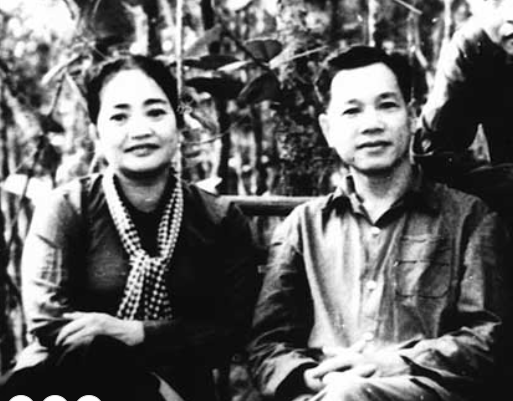 |
| Comrades Tran Van Tra and Nguyen Thi Dinh were officers in the Southern Liberation Army Command. Photo: Archive |
After consecutive defeats in the Central Highlands, Hue and Da Nang, the enemy fell into crisis, and the defeated troops retreated to Saigon. To keep Saigon, they organized a defense line stretching from Phan Rang through Xuan Loc to Tay Ninh, in which Xuan Loc was "an important link that must be kept", the "steel door" to the east of Saigon, losing Xuan Loc meant losing Saigon. Due to the importance of Xuan Loc, comrade Tran Van Tra directly went to the Forward Command Headquarters to assign the task to the 4th Corps to launch an offensive campaign to break the Xuan Loc defense line.
On April 9, 1975, the Xuan Loc Campaign began, and we successively captured a number of important targets. From April 11 to 14, the enemy mobilized forces and firepower, causing us many losses. There was an opinion that we should withdraw all forces from Xuan Loc town, then organize attacks to destroy the enemy troops outside, destroying each unit. Senior Lieutenant General Tran Van Tra suggested: "Let me go there, grasp the specific situation on the spot, and work with my comrades to study ways to win the battle."
On the afternoon of April 11, Senior Lieutenant General Tran Van Tra went from Loc Ninh to the 4th Corps Command Headquarters to direct and urge the 4th Corps to implement a new way of fighting: Send the 4th Corps out to occupy the Dau Giay intersection, destroy enemy units that were not yet firmly established and lacked hiding places; cut Route 1, isolating Xuan Loc from Bien Hoa; cut Route 2 to Ba Ria; use long-range artillery to control Bien Hoa airport.
Thanks to that way of fighting, on April 21, the Xuan Loc defense line - the "steel door" protecting the East of Saigon was smashed, Xuan Loc town and Long Khanh province were liberated. The victory of Xuan Loc-Long Khanh created favorable conditions for the army and people in the East and Northeast to prepare forces and battle positions with the army and people in all directions to advance towards Saigon.
During the Ho Chi Minh Campaign, comrade Tran Van Tra was assigned as Deputy Commander of the campaign. On April 22, 1975, the Party Committee and the Campaign Command met to approve the plan to attack Saigon-Gia Dinh. Senior Lieutenant General Tran Van Tra and the Campaign Command agreed on the campaign's combat plan. Thoroughly implementing the ideology of "lightning speed, boldness, surprise, sure victory", implementing the order of "lightning speed, even faster, boldness, even bolder" of General Vo Nguyen Giap, from April 26 to 30, 1975, with overwhelming force, our five brave troops simultaneously advanced towards the last stronghold of the Saigon puppet government.
As Commander of the Liberation Army of South Vietnam and Deputy Commander of the Ho Chi Minh Campaign, comrade Tran Van Tra, together with the Military Commission, the Regional Command, and the Campaign Command, contributed his intelligence and enthusiasm to advise, develop plans, and determine strategies to liberate the South and organize its successful implementation.
NGUYEN TOAN
-------------------
Deputy Commander of the Campaign Dinh Duc Thien
In 1974, the Ministry of National Defense separated the technical equipment and military armaments sector to establish the General Department of Engineering to prepare for the general offensive to liberate the South. Comrade Dinh Duc Thien was assigned as Deputy Minister of National Defense, Deputy Head of the State Planning Committee and Head of the General Department of Logistics and the General Department of Engineering. In April 1975, he was a representative of the Central Military Commission and was assigned the important responsibility of Deputy Commander of the Ho Chi Minh Campaign.
Preparing logistics and technical work (HC-KT) for the general offensive to liberate the South was a very difficult and complicated task. After the Central Highlands Campaign and the Hue-Da Nang Liberation Campaign, the Politburo and the Party Central Committee decided to concentrate forces, technical weapons, materials, and logistics to liberate Saigon before the rainy season. The technical force of the campaign was established on the basis of the technical force of the Ministry of National Defense's frontline and the technical force of the Region. The technical support was assigned: The campaign's HC-KT agency provided support for the 1st, 2nd, 3rd Corps and the technical arms. The HC-KT agency of the Region provided support for the 4th Corps and the units on Route 20. The HC-KT agencies of Military Regions 7, 8, and 9 provided support for the main divisions of the Region and the military regions in My Tho, Can Tho, and Southwest Saigon.
 |
| Comrade Dinh Duc Thien (far right) with some comrades in the Ho Chi Minh Campaign Command (April 1975). Photo archive |
Implementing the orders and combat plans of the General Command, under the direction of comrade Dinh Duc Thien, the General Department of Engineering focused all efforts, mobilized to the highest level of capacity to ensure technical equipment for the forces participating in the campaign; prioritized the full and synchronous supply of weapons and technical equipment for the main force units, mobile corps and technical service units. Directed technical specialties and technical branches of military regions, corps, service branches and arms to strengthen forces, and perform well the technical work to serve the campaign. From the beginning of January to the end of April 1975, the General Department of Engineering mobilized more than 2,000 officers and technical staff of the General Department, nearly 3,000 military vehicles, organized the transportation of hundreds of thousands of tons of weapons, technical equipment and thousands of people to participate in the General Offensive and Uprising in the Spring of 1975.
With the guiding ideology of "lightning speed, boldness, surprise, sure victory", the Party and the Government directed the mobilization of all forces of the whole country and the whole army to the highest level to serve the logistics work. The need for material reserves for the Ho Chi Minh Campaign was very large, while the time for direct logistics preparation for the campaign was very short (20 days, from April 5 to 25, 1975). To solve this problem, in addition to mobilizing all support aspects according to the direct direction of the Battlefield Support Council, under the direction of comrade Dinh Duc Thien, the General Department of Logistics coordinated with units to concentrate all forces and means to fully prepare materials and logistics to serve the campaign. Because we attacked at lightning speed with overwhelming force, and the enemy was quickly destroyed and disintegrated, the campaign ended early and the amount of material and technology consumed was not much. The entire campaign used nearly 14,000 tons of various materials, equal to 21.6% of the reserve...
In January 1997, at the 10th anniversary memorial service of Senior Lieutenant General Dinh Duc Thien, General Vo Nguyen Giap emotionally said: Comrade Dinh Duc Thien had great contributions in building the Truong Son route, building a large transportation system from the Northern rear to the battlefields, including the oil pipeline, to ensure support for the South, creating infrastructure for force mobilization and large-scale transportation, effectively serving the strategic opportunity, especially for the General Offensive and Uprising in Spring 1975.
CHI PHAN
-----------------
Deputy Political Commissar and Chief of Political Campaign Le Quang Hoa
On April 5, 1975, the Politburo and the Central Military Commission decided to organize the Eastern wing, comrade Le Trong Tan was appointed Commander, comrade Le Quang Hoa as Political Commissar. The Eastern corps advanced along Route 1 and the Central coast, marching and fighting to destroy enemy forces, smashing the Saigon puppet government's defense lines in Phan Rang, Phan Thiet, Ham Tan, liberating the provinces of Ninh Thuan, Binh Thuan, Binh Tuy - the remote defense areas of the US-puppet against Saigon in the East...
Comrade Le Quang Hoa and the Eastern Wing Command thoroughly grasped the Central's strategic determination to march at lightning speed to strike quickly and strike hard, crushing all of the enemy's strategic plots of regrouping. The Command discussed that, in addition to the support of superiors and strategic transport corps, it was necessary to take advantage of means of transport to bring the mass of materials, weapons and technical equipment forward, seek the help of local authorities, mobilize more transport vehicles, and ensure that all forces of all branches could be mobilized by motor vehicles.
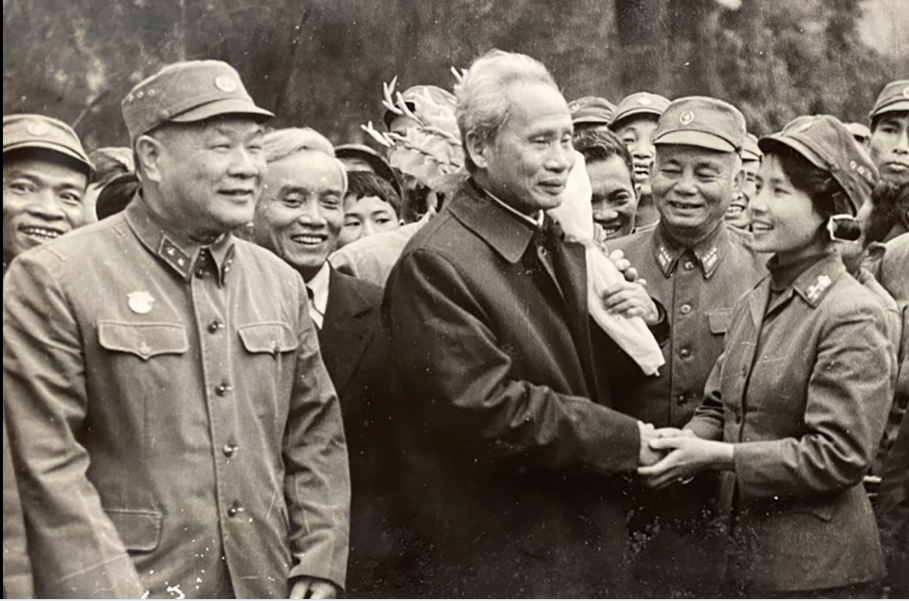 |
| Comrade Le Quang Hoa (left) on one occasion welcoming Prime Minister Pham Van Dong to visit the unit. Photo: Archive |
Along the way, the Eastern wing received a telegram from the General Command: “Iron determination to completely liberate the South before the rainy season... Must penetrate deep, attack strongly, be extremely proactive, extremely mobile, extremely flexible... Seize every hour, every minute, fight decisively, win completely...”. The telegram urged officers and soldiers in all directions not to hesitate in the face of any difficulties, to strive to complete the mission. The continuous loss of control over a large area from the Central Highlands to the extreme South Central and South pushed the enemy into a state of confusion and despair. On April 8, 1975, the Politburo and the Central Military Commission decided to establish the Saigon-Gia Dinh Campaign Command (Ho Chi Minh Campaign). After that, comrade Le Quang Hoa was appointed by the Politburo as Deputy Political Commissar and Chief of Political Affairs of the campaign.
On April 16, 1975, the "steel shield" of Phan Rang of the Saigon puppet regime fell. This victory was a guarantee for the determination of the entire Party, the entire people and the entire army to liberate the South in April 1975. This victory honored the Eastern wing, to which comrade Le Quang Hoa contributed. After having to retreat to Phan Rang to defend, the Saigon puppet regime was confused but still very stubborn. However, after the enemy lost Phan Rang, the Xuan Loc base could not hold out.
From April 26, the Liberation Army besieged Saigon from five directions, broke through the outskirts and penetrated deep into the inner city. The Ho Chi Minh Campaign Command, including comrade Le Quang Hoa, united, creatively organized the troops to break through, attack successfully, liberate Saigon, and unify the country.
PHAN TRAC THANH DONG
* Readers are invited to visit the 50th Anniversary of the Great Victory of Spring 1975 section to see related news and articles.
Source: https://baodaknong.vn/bo-tu-lenh-chien-dich-ho-chi-minh-251128.html




![[Photo] Cultural, sports and media bloc at the 50th Anniversary of Southern Liberation and National Reunification Day](https://vphoto.vietnam.vn/thumb/1200x675/vietnam/resource/IMAGE/2025/4/30/8a22f876e8d24890be2ae3d88c9b201c)
![[Photo] The parade took to the streets, walking among the arms of tens of thousands of people.](https://vphoto.vietnam.vn/thumb/1200x675/vietnam/resource/IMAGE/2025/4/30/180ec64521094c87bdb5a983ff1a30a4)

![[Photo] Chinese, Lao, and Cambodian troops participate in the parade to celebrate the 50th anniversary of the Liberation of the South and National Reunification Day](https://vphoto.vietnam.vn/thumb/1200x675/vietnam/resource/IMAGE/2025/4/30/30d2204b414549cfb5dc784544a72dee)
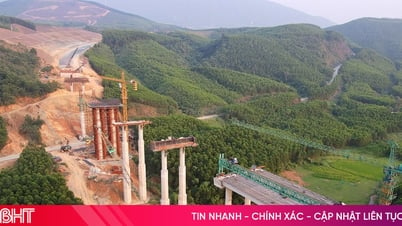

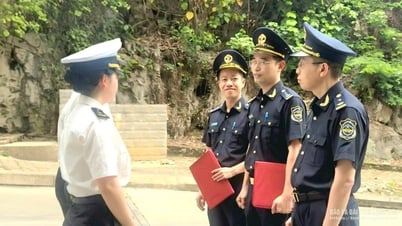

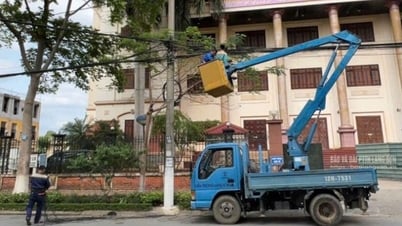





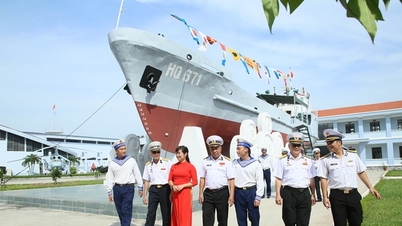
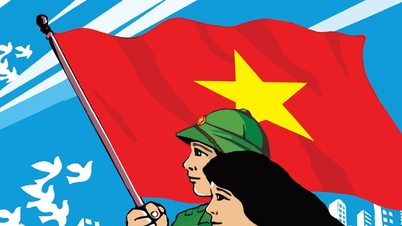



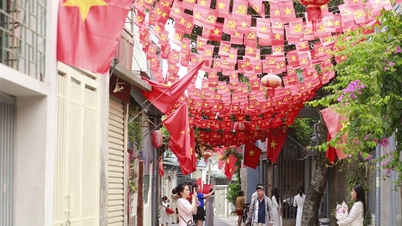
![[Photo] Performance of the Air Force Squadron at the 50th Anniversary of the Liberation of the South and National Reunification Day](https://vphoto.vietnam.vn/thumb/1200x675/vietnam/resource/IMAGE/2025/4/30/cb781ed625fc4774bb82982d31bead1e)













































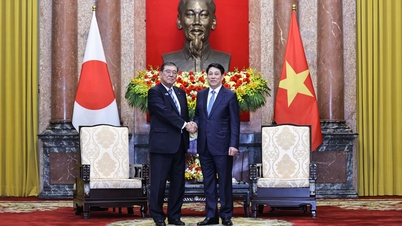

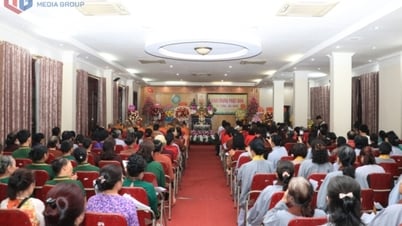







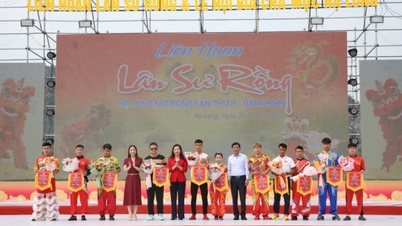











Comment (0)